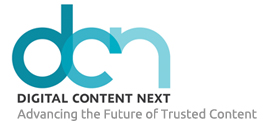It’s no secret: In the coming year, readers will run up against more memberships, more pleas for donations, and more paywalls. In short, more opportunities for money to escape their wallets to bolster media outlets they have previously accessed free of charge.
Companies like Buzzfeed and Quartz have recently embraced direct-to-consumer business models, joining traditional subscription outlets in a rush away from digital advertising reliant models. Beset by multipronged threats like the internet giants Facebook and Google sucking up all traces of revenue growth, declining consumer trust, and an alarming trend of fraud cases, it’s not hard to see why digital media companies are looking for alternatives.
But this shift comes at a cost. While ad based revenue models optimized for reach, the new normal will be the tailoring of niche content to attract a reliable paying clientele. The Atlantic’s Derek Thompson recently predicted that the entire industry will return to the early days of journalism where a “party press” would stoke the partisan emotions of their readers.
“News media of the future could be as messy, diverse, and riotously disputatious as their audiences, because directly monetizing them is the new central challenge of the news business,” wrote Thompson.
That means that digital publishers will need to navigate the real risk of subscription fatigue. How much are consumers willing (and able) to pay for?
What it will take to survive in this new DTC world?
“As loose paywalls tighten and everyone seeks reader revenue, I imagine audiences will be forced to make choices, especially in what is looking like a dramatically slowing US economy,” said former GIzmodo Media Group CEO and Columbia University professor Raju Narisetti.
He expects that people will begin to add it all up and realize that — given other recurring payments like internet service, mobile, and subscription-based everything from meal services to shaving supplies — their content selection might need to be more discriminating.
Needless to say, publishers need to figure out how to compete for limited discretional dollars. One approach that many are trying is aggregate services like Flipboard, Texture, and Blendle.
Adding Texture
An obvious option could be an even more widespread integration into an app like Texture, purchased by Apple last year. Texture offers a service similar to Netflix wherein a group of publishers bands together to offer a wide range of branded content for a single rate. While currently available to use, there are persistent rumors of a spring relaunch of the service included in a future Apple News update, foreseeably offering an increased amount of content above and beyond the current free selection. It’s hoped that the move would have the same omph Apple brought to its Apple Music platform. At least that’s the pitch.
Publishers remain skeptical, though. “Some executives fear Texture could end up doing more harm than good. Their concern is that Apple could steal their current subscribers, who would save money by reading articles on Texture instead,” reported Bloomberg.
One thing that could change that calculus is the confidence boost of a New York Times-shaped news outlet taking the plunge, according to Narisetti. While he admits it’s natural for the larger players to be cautious, there’s a vector for profit in the service.
“That’s because they are currently giving away up to 20 stories entirely for free on Apple News. So, in my mind, they are actually likely to incrementally gain by monetizing that via Texture, than lose any significant, core loyal direct subscribers to lower-priced subs,” he said.
Once that’s overcome, “the US news floodgates will open up on Texture, much like how NYT paywall given the confidence to the American general news industry,” he added.
But there are always more than one way to approach the problem.
Infinite Scroll
Focusing on user experience, the creators of Scroll.com want to offer a direct to customer alternative which side-steps competing with a publishers revenue models by offering to remove the ads from a collection of publishers for a monthly fee. Sites load faster, users can opt out of advertising, and publishers get a new revenue stream.
“We avoid the problem of cannibalization and instead get to complement rather than compete with them. Most publishers see us as a middle of the funnel service, creating more engaged users who can then be converted into their own plans,” said Scroll founder Tony Haile.
But perhaps the industry needs to learn from the experience of the wider technology industry. Subscriptions are an increasingly popular way of packaging any digital-adjacent service (often dubbed Anything as a Service, or XaaS), whether it be a ride sharing plan, in-app purchases, or even the meals you make for dinner. But they’ve even suffered through the same issues as facing the digital publishing industry.
Value for Life
“As a media company looking at some of the struggles of consumer XaaS companies like Blue Apron last year, I would make sure to focus relentlessly on reducing my churn rate, and increasing the Customer Lifetime Value (CLV) of my paid subscriber base,” said Gabe Weisert managing editor at Zuora, a subscription management platform provider.
He explained that the way towards healthy CLV is to drive usage at every opportunity. Keeping people engaged keeps them paying customers. Strategies which achieve that include cross-selling and upselling. For example, the New York Times saw solid growth of new subscribers from their crossword and cooking app offerings.
To entice their audience, Buzzfeed is offering tote bags for new subscribers, but Amazon is taking those subscriber-enticements to a new level. The Seattle-based retail giant has started offering free sample of items of products based on users’ shopping habits data—with the only goal to getting us to buy more.
“CLV should be the gold standard metric of every media company. That’s all Netflix cares about. It’s all Amazon cares about. That’s why [subscription services] keep giving us “free” stuff — they know exactly how much those investments materially affect the value of their subscriber base,” he said.





















